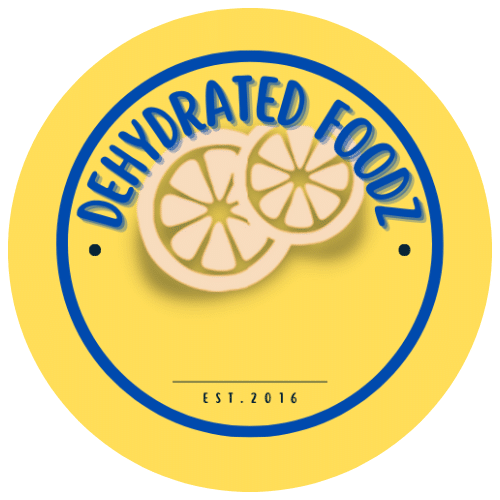
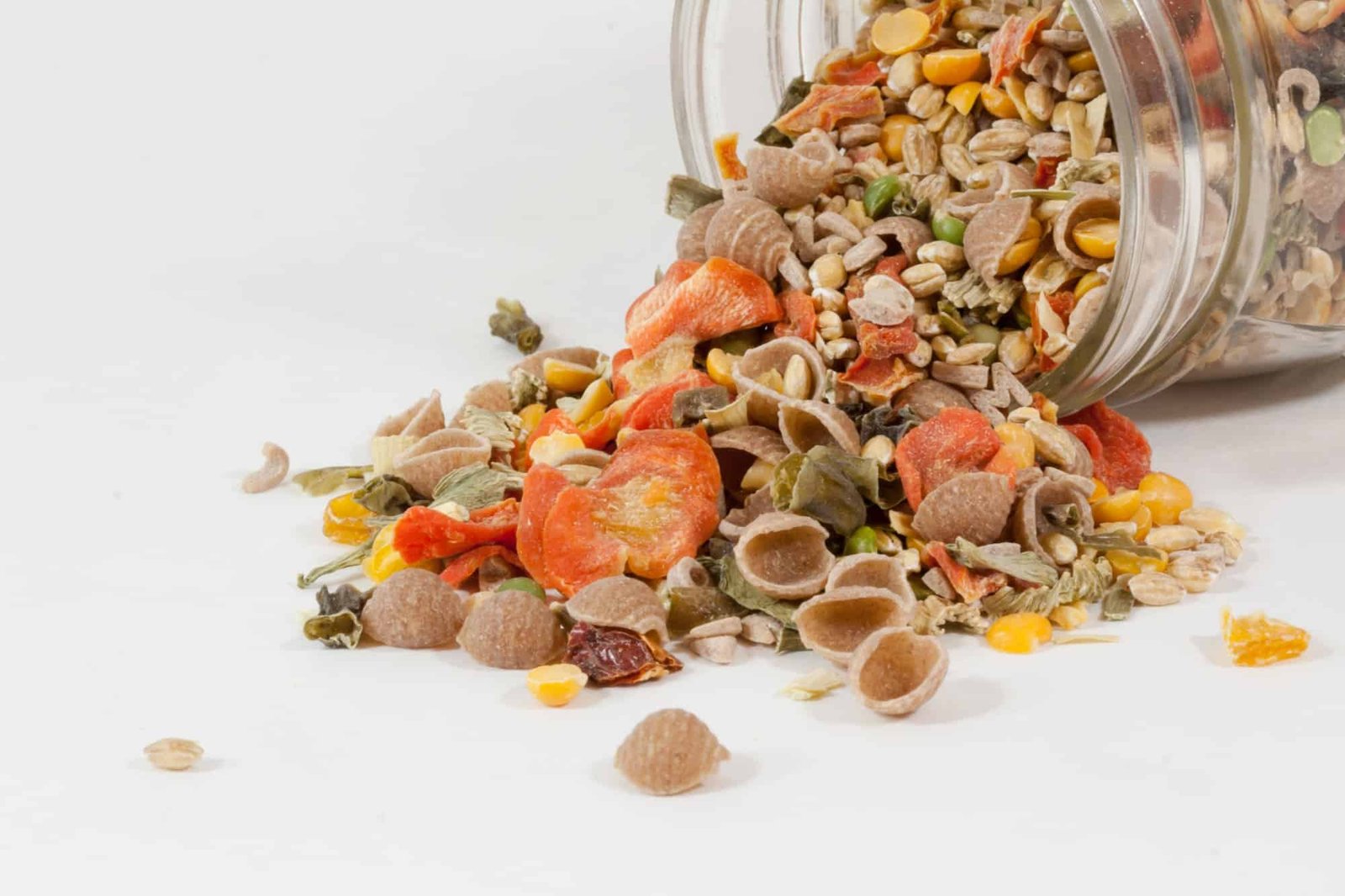
The 10 Best Dehydrated Backpacking Meals for Your Next Trip
When you’re out on the trail, the last thing you want to be lugging around is heavy, perishable food. That’s where dehydrated meals come in. These lightweight, convenient meals are specifically designed for backpacking. Just add hot water and you’re good to go! Whether you’re hiking the Appalachian Trail or relaxing lakeside, you’ll be fueled and satisfied with these meals. Making your own homemade dehydrated backpacking meals lets you control the ingredients and seasonings, and you can customize them to your tastes and dietary needs. Plus, they store for ages if you want to plan ahead!
Quick View Table of Dehydrated Backpacking Meals
| Meal | Key Ingredients | Preparation Method | Rehydration Time |
|---|---|---|---|
| Oatmeal | Oats, granola, sugar, cinnamon | Add hot water | 5-10 minutes |
| Potatoes | Dehydrated grated potatoes | Add water and seasonings | Few minutes |
| Stroganoff | Noodles, dehydrated ground beef | Add powdered milk, tomato, garlic | Few minutes |
| Macaroni and Cheese | Dry pasta, dry cheese | Soak, then heat | Few minutes |
| Dried Fruit | Apples, bananas, apricots, peaches | No preparation needed | Ready to eat |
| Rice and Veggies | Rice, dried vegetables | Add spices and water | 10-15 minutes |
| Beans | Canned beans | Add water | Few minutes |
| Apple Pie | Dried apples, sugar, cinnamon | Mix with breadcrumbs | Ready to eat |
Keep scrolling for an in-depth guide.
- What is Dehydrated Backpacking Food?
- The Importance of Dehydrated Backpacking Meals
- Oatmeal
- Potatoes
- Stroganoff
- Macaroni and Cheese
- Dried Fruit
- Rice and Veggies
- Beans
- Apple Pie
- Benefits of Homemade Dehydrated Backpacking Meals
- Dehydrating Individual Ingredients
- Backpacking Meal Planning and Preparation
- Nutrition and Calorie Considerations for Backpacking Meals
- Backpacking Food Safety and Storage
- Rehydrating Dehydrated Backpacking Meals
- Shelf Life of Dehydrated Backpacking Meals
- DIY Backpacking Food Tips and Tricks
- Common Mistakes to Avoid When Making Homemade Dehydrated Backpacking Meals
- Start Dehydrating
- FAQ
- What to rehydrate backpacking food in?
- How do you cook dehydrated food for backpacking?
- What is the best instant food for hiking?
- What are good dehydrated foods for hiking?
- Can you travel with dehydrated food?
- How long do dehydrated backpacking meals last?
- Why do backpackers bring dehydrated food?
- Can you make backpacking meals with a dehydrator?
- How long does dehydrated backpacking food last?
- What are 10 common foods that are dehydrated?
- Can you dehydrate your own food for backpacking?
What is Dehydrated Backpacking Food?
Dehydrated backpacking food is a great option for outdoor enthusiasts. Essentially, it’s any food that has been preserved by removing the moisture from it.
Making your own dehydrated meals at home is super fun and easy to do. All you need is a food dehydrator. You can make just about any meal you want and dehydrate it. If you don’t have the time or patience to make your own dehydrated meals, you can always buy pre-made dehydrated backpacking meals at a store.
Backpackers love dehydrated food because it lasts forever and is so easy to prepare. You can make meals months in advance and just rehydrate them on the trail with hot water.
The Importance of Dehydrated Backpacking Meals
If you’re like most outdoor enthusiasts, you go backpacking to spend time outdoors, far away from the stress of your day to day life. But don’t forget that backpacking is an endurance sport.
Completing a big trip requires day after day of hiking, often more than 15 miles at a time. You need to be in shape. And more importantly, you need to pack light.
One of the first rules of packing light is: never carry more water than you need. Every time you get to a stream, only take as much water as you’ll need to get you to the next stream. And NEVER carry extra water in your food.
That means no fruit, no sauces, and no pasta.
That’s why dehydrated backpacking meals are essential to a successful backpacking trip. With nothing more than a bit of water, which you’ll gather from a nearby stream and heat up on your stove, you can turn a bag of dried food into a delicious meal. So what meals should you bring?
Let’s have a look at some easy backpacking meal ideas to try
Oatmeal
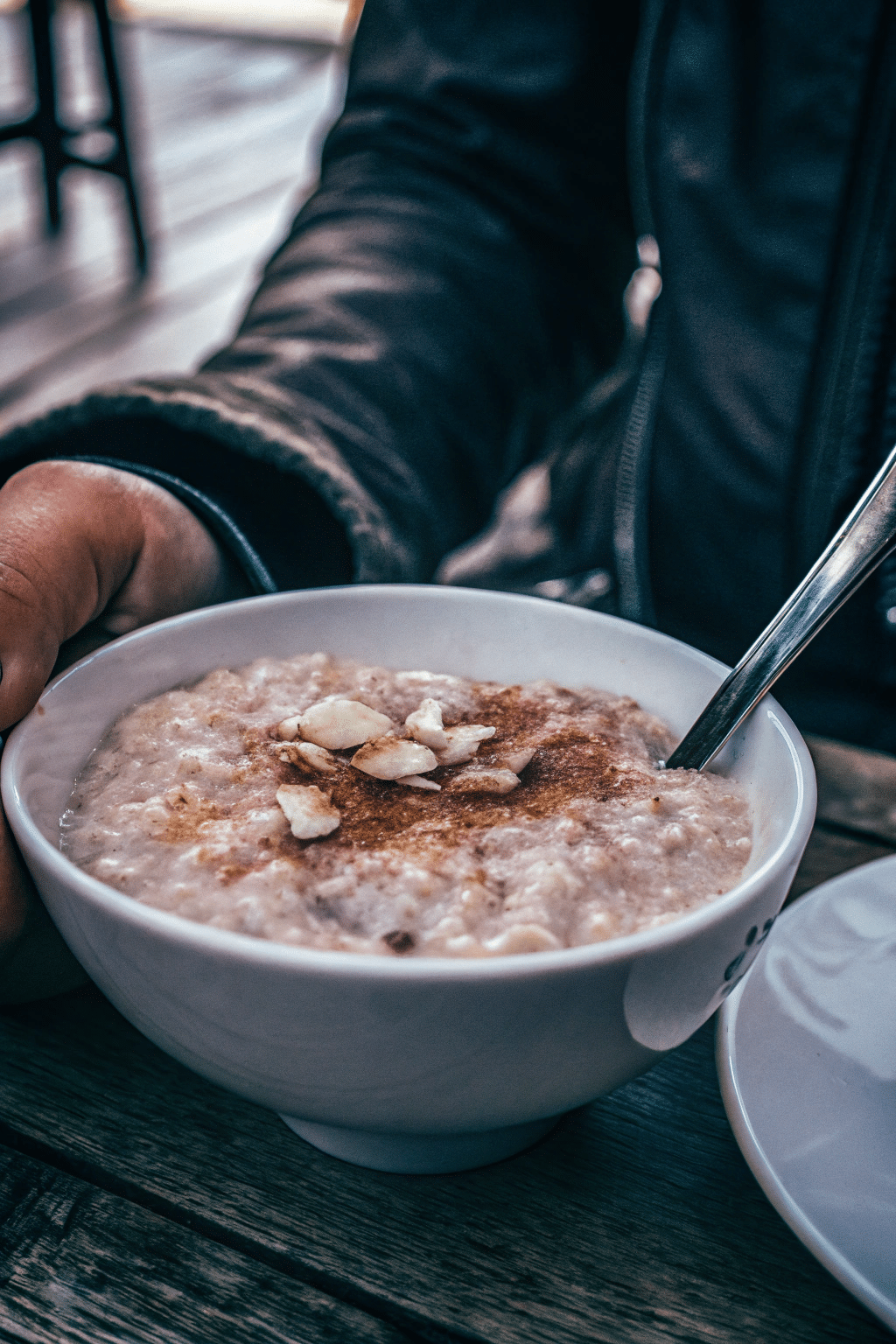
Start the day right with this backpacking classic.
Add hot water to regular oatmeal, wait for 5 to 10 minutes, and enjoy. If you want to make it quick, use instant oatmeal. If you’re using a stove, instant oatmeal can save you some cooking fuel (and thus some weight) because you can rehydrate it with cold water.
Be sure to add lots of goodies such as granola, sugar, and cinnamon (but not non-dehydrated fruit!). You can even add dehydrated milk for a creamier option.
Potatoes
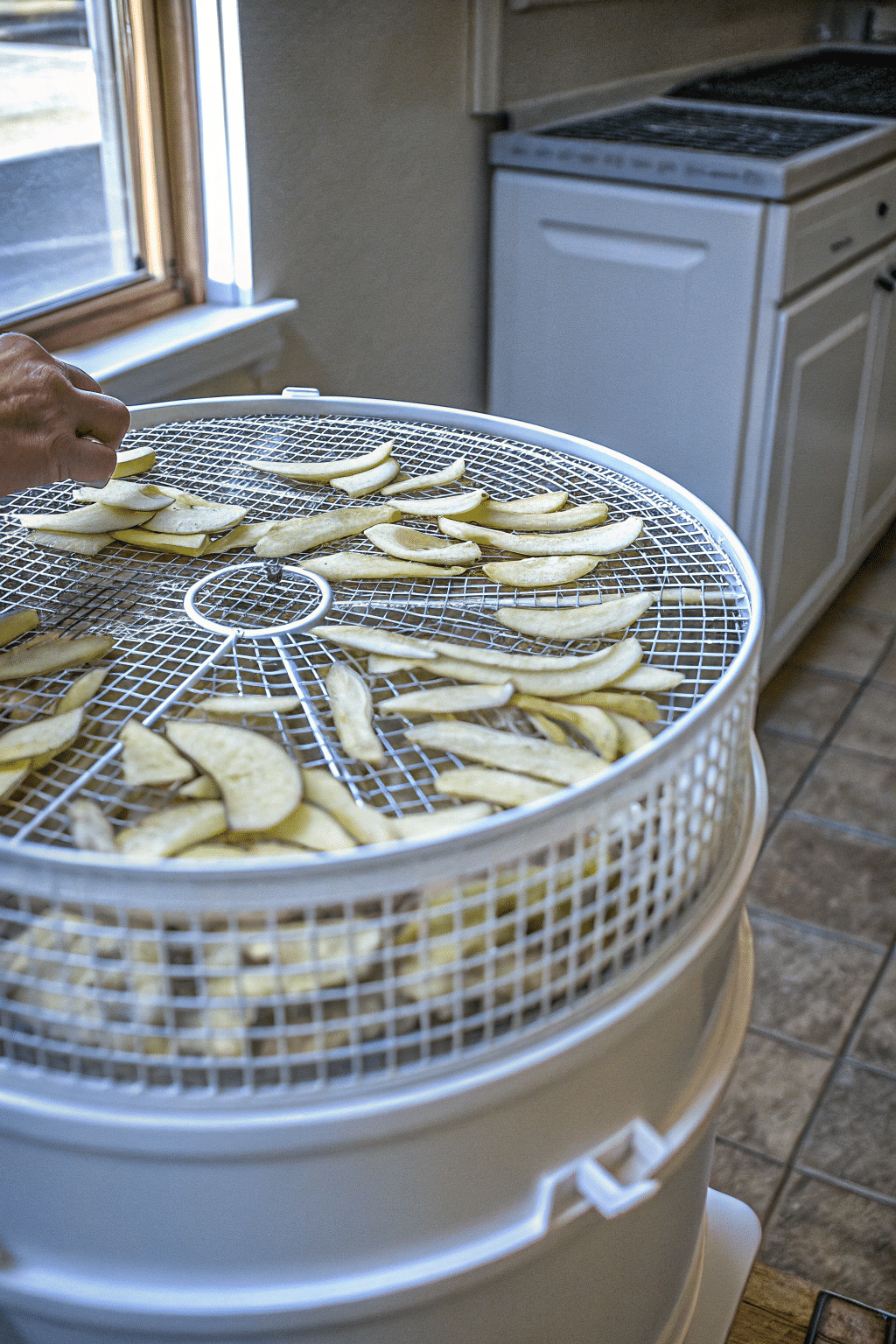
There’s nothing like finishing a long day of hiking and diving into a big, comforting bowl of potatoes.
Before the hike, steam as many potatoes as you plan to eat on the trail. Then grate them, place the shavings onto your dehydrator tray, and dehydrate them. It’s that easy.
Once you’re on the trail, add a bit of water and enjoy. You can also carry a little baggy of salt and pepper along with a little bit of butter (a food without much water) to make them tasty.
Stroganoff
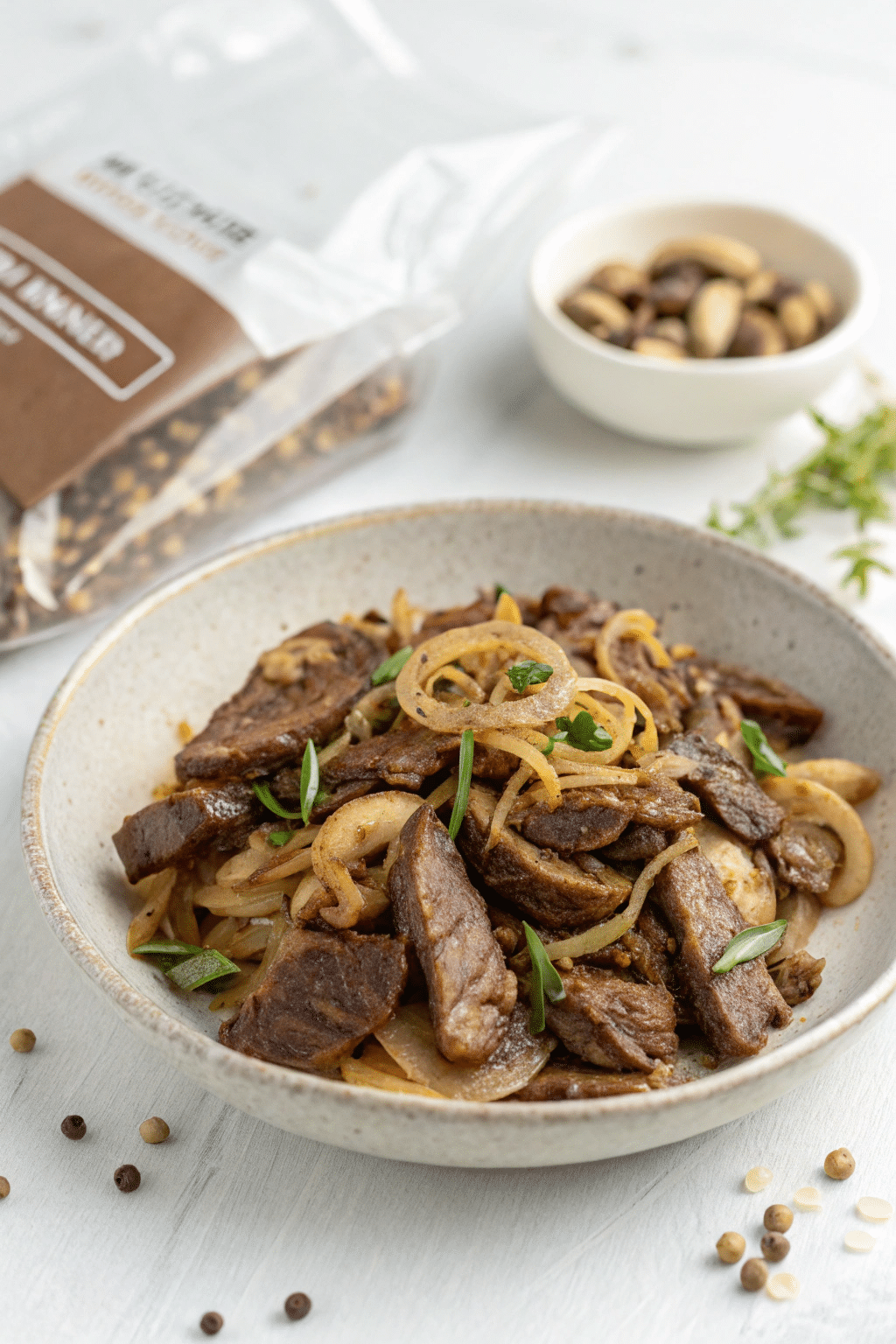
Stroganoff is another great option if you’re craving comfort food. Start with some noodles and dehydrated ground beef (or mushrooms); then add some powdered milk, tomato powder, and garlic powder.
If you want to get creative, you can bring extra spices and dried goodies in separate plastic baggies. And you can use these extras for all your meals.
Macaroni and Cheese
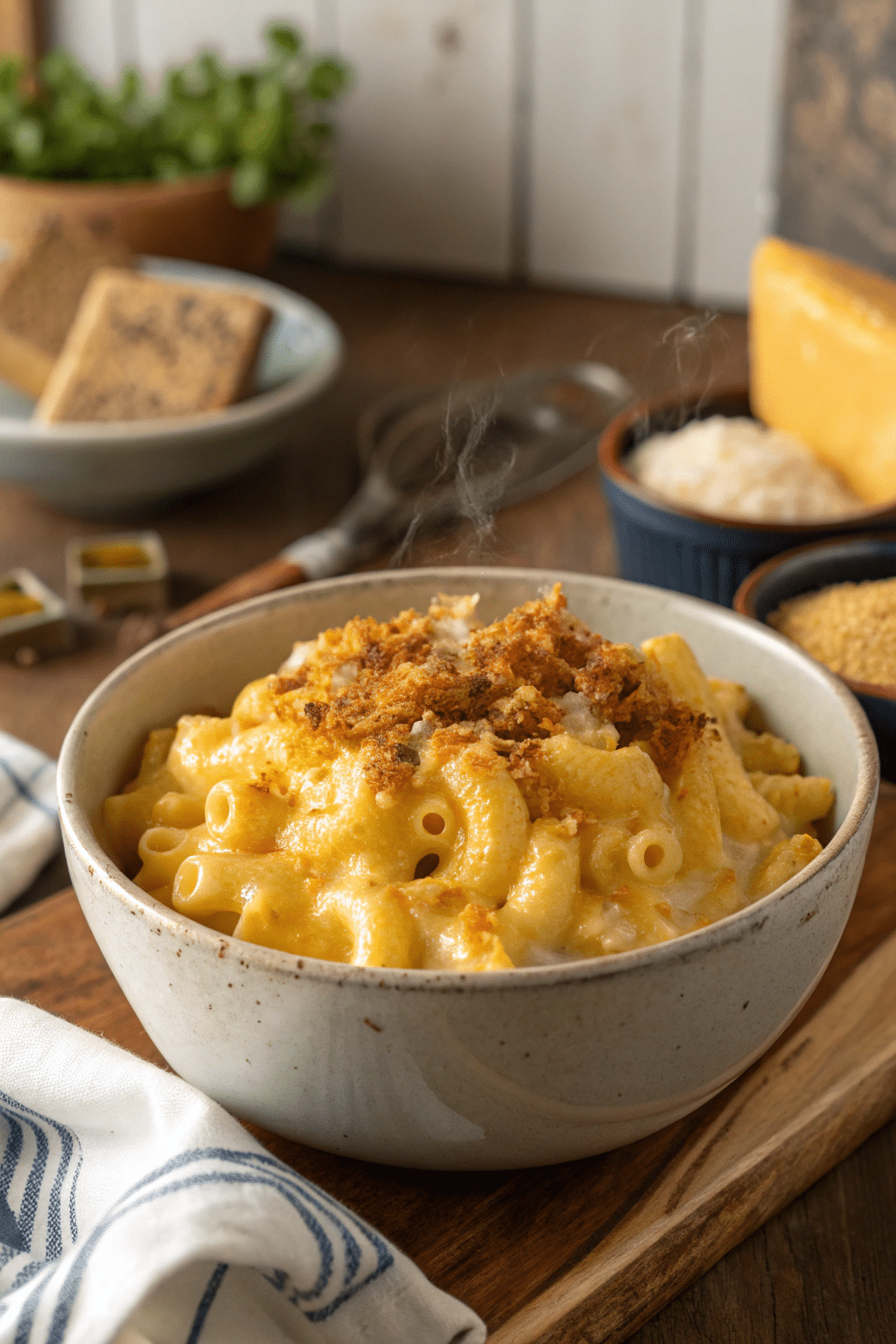
This is another one that can be either a simple meal or the base for something more creative. All you need is dry pasta and dry cheese. When you’re on the trail, let it soak for a few minutes before you heat it up.
And of course, if you brought butter, veggies, or spices, feel free to throw them in.
Dried Fruit
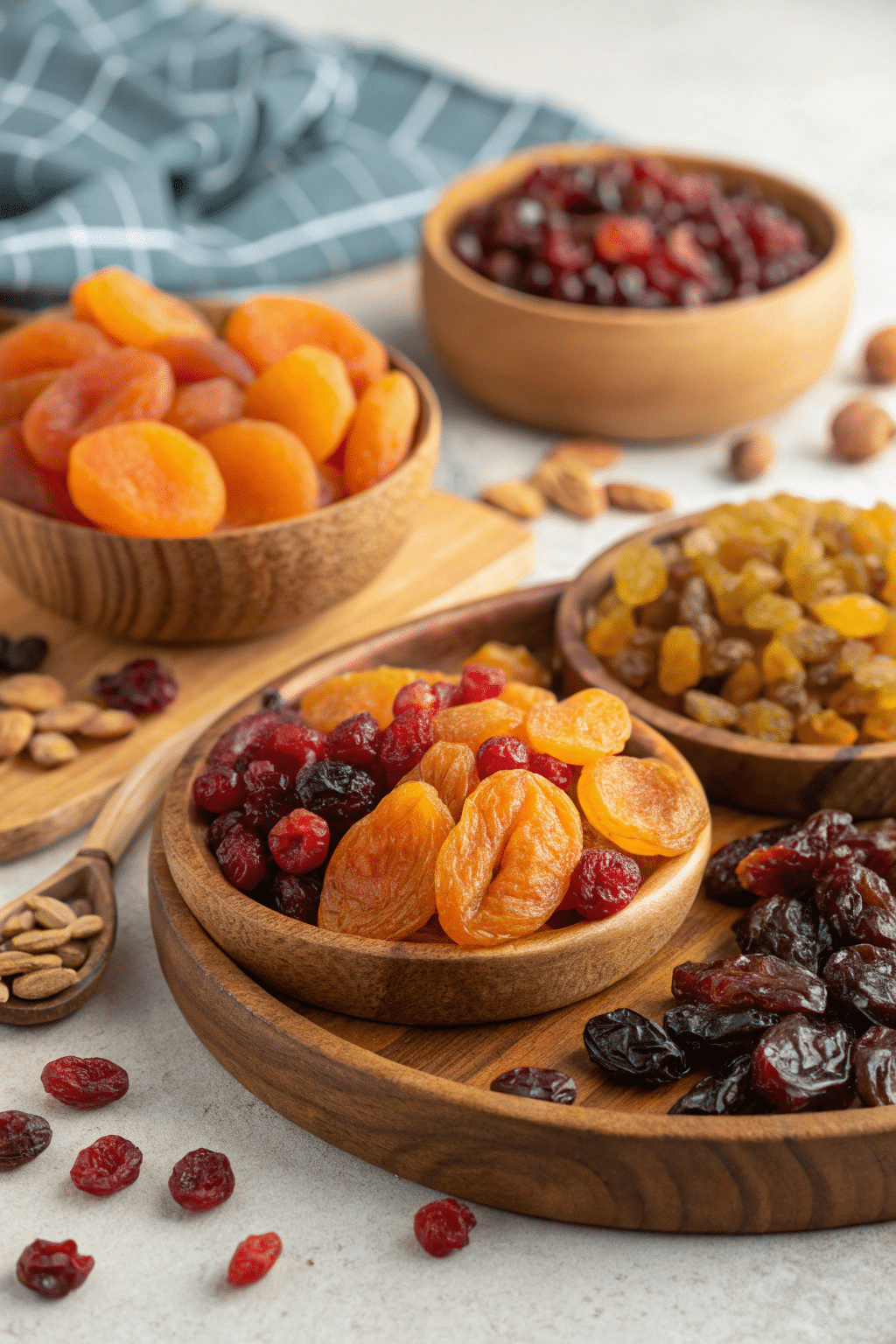
This isn’t necessarily a meal, but dried fruit is indispensable trail food. If you’re out there for longer than a few days, you’re going to be craving fruit. But like we said, fresh fruit is full of water.
It’s a good idea to wash your fruit in a citric acid solution before you dry them. This will kill all the bacteria and ensure that the fruit lasts longer. You can dry pretty much any fruit, but some common ones are apples, bananas, apricots, and peaches.
In addition to being a great snack, dried fruit is a great addition to other meals, especially your morning oatmeal.
If you’re looking for something a bit more interesting than dried fruit, try making fruit leather.
Rice and Veggies
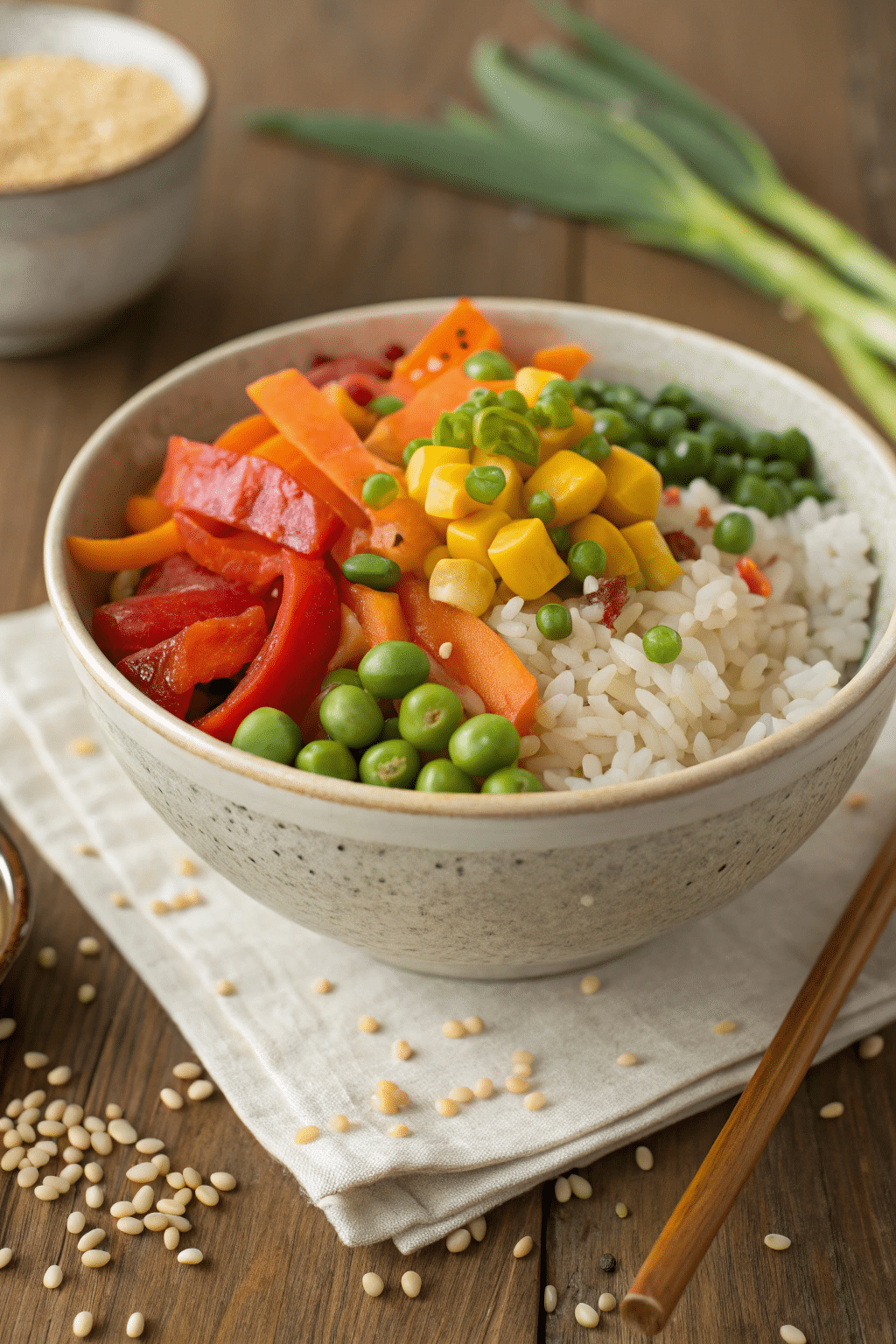
Rice is another versatile base that can form the base of your backpacking diet. Bring rice and dry vegetables in one bag, and in another bag, bring a mix of spices and other powdered ingredients to serve as your sauce.
Rice (like pasta) may take a while to rehydrate. If you’re not patient enough to wait for rice (and we don’t blame you), couscous is a great substitute that will be ready in minutes.
Beans
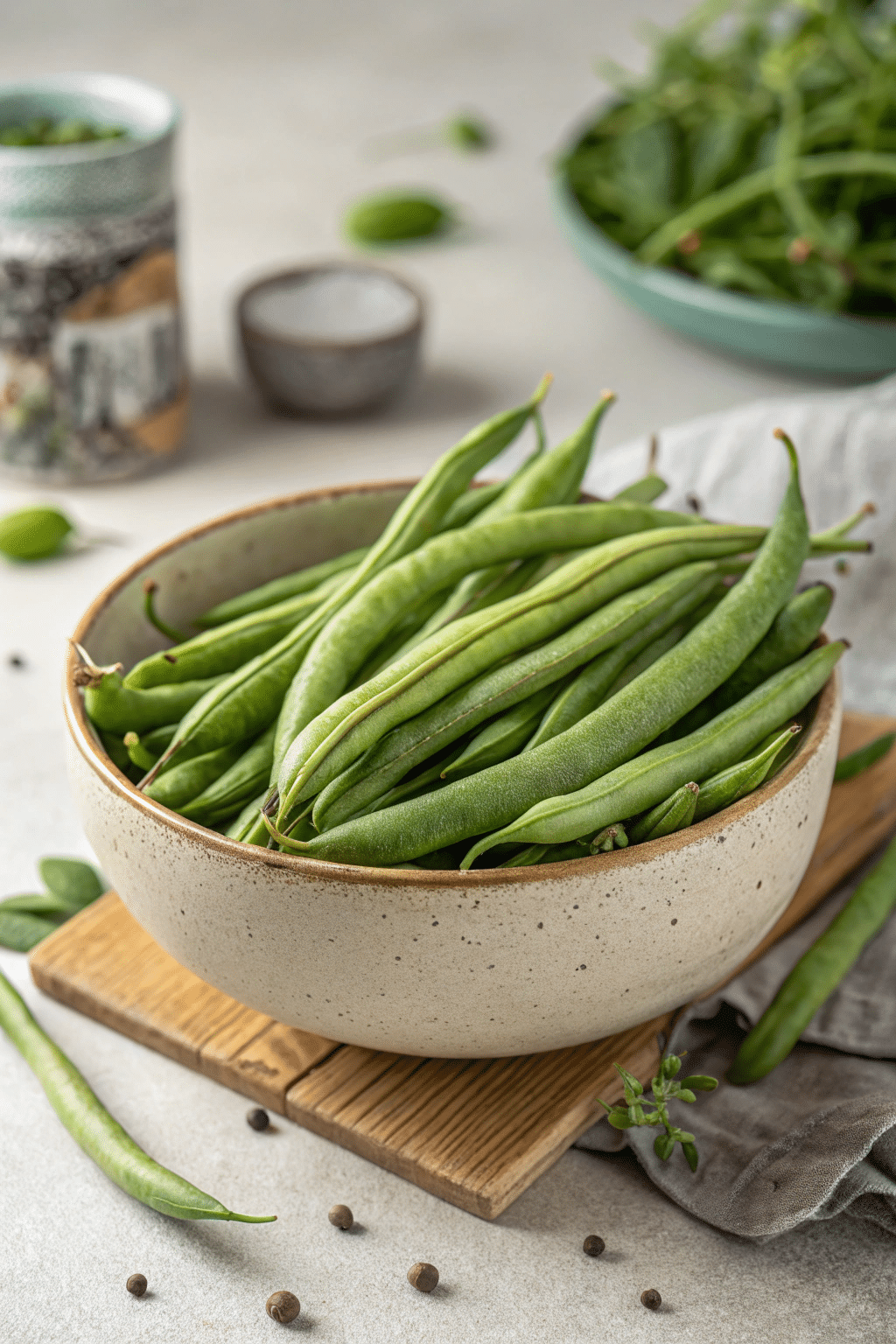
Rice and veggies aren’t enough? Bring some bean to add to the mix.
When dehydrating beans, make sure you use canned beans. If you dehydrate home-made beans, they’ll be difficult to rehydrate again.
Apple Pie
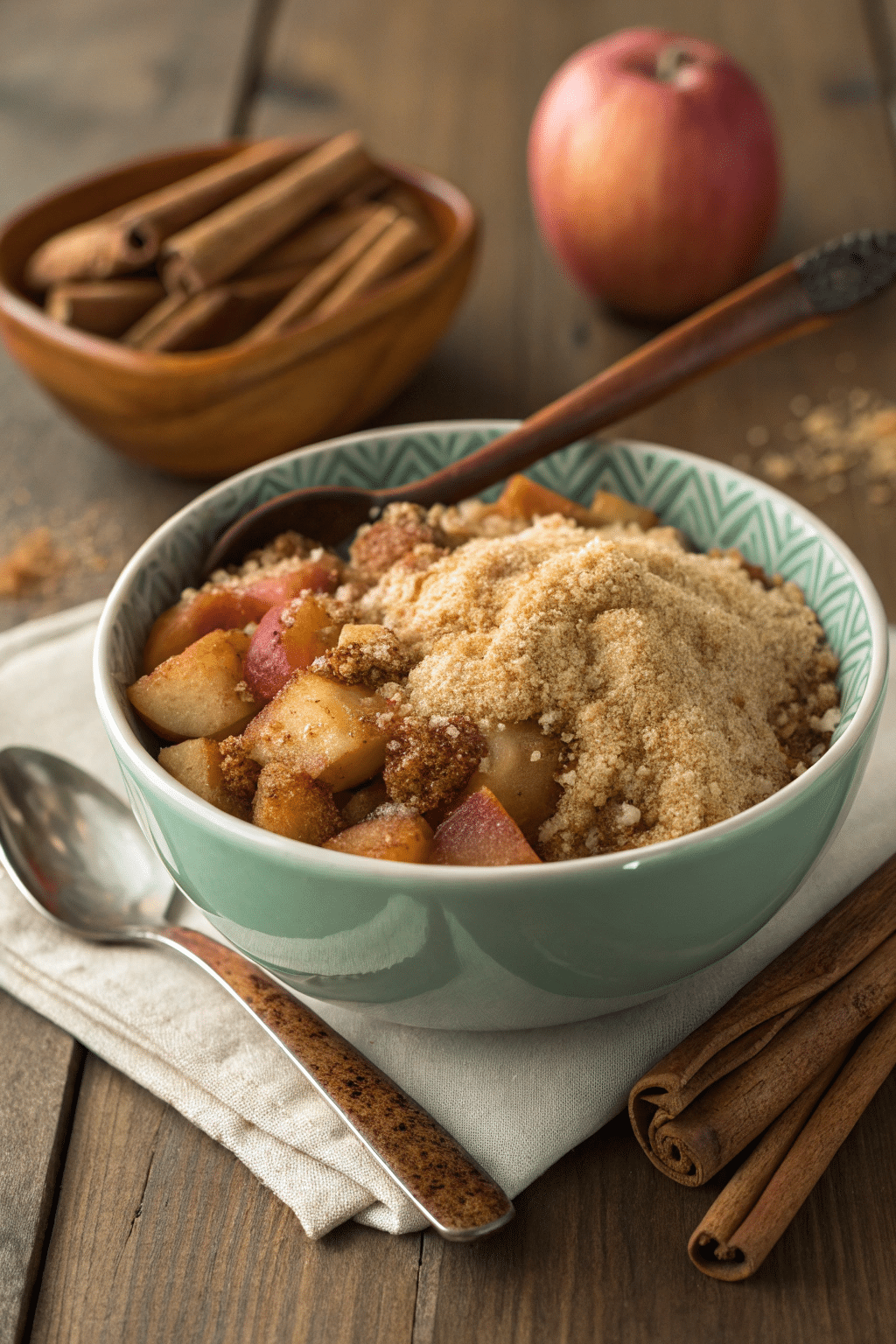
Just because you’re in the wilderness doesn’t mean you don’t get to eat dessert. Here’s a dehydrated version of apple pie. It won’t be as warm and gooey as you’re used to, but we promise, it’ll hit the spot when you’re on the trail.
Mix together dried apples, sugar, cinnamon, and breadcrumbs. You don’t even need to add water. It’s the perfect trail dessert.
Benefits of Homemade Dehydrated Backpacking Meals
One of the best things about homemade dehydrated meals is you get to pick every ingredient that goes into them. You can pick and choose your favorite flavors and textures to make meals that you’ll love.
Dehydrating your own ingredients at home is not only healthier, it’s also cheaper. You can pick the best quality ingredients and avoid all the preservatives and additives that are in most pre-made hiking dehydrated meals.
Making big batches of homemade dehydrated meals is perfect for long backpacking trips. You can make a bunch of meals at a time and have them ready to eat whenever you need them.
Dehydrating Individual Ingredients
Dehydrating fruits, veggies and meats is a great way to make your meals more interesting. You can make just about any combination you want and make your own trail soups and stir-fries.
Before you dehydrate your ingredients, consider throwing them in a food processor to chop or puree them. This helps them dehydrate faster and rehydrate quicker on the trail.
Don’t forget about cooked pasta and rice. Dehydrating them is a great way to make them lightweight for backpacking. They rehydrate perfect and are a great filling meal option.
Backpacking Meal Planning and Preparation
When planning your backpacking meals, think about how many calories you need and what kind of activity you’ll be doing. You need to fuel your body when you’re hiking all day.
Pick meals that will give you lots of energy and fill you up. You don’t want to be hungry and tired on your trip.
Also, consider the weight and bulk of your food when planning your meals. Dehydrated food is perfect because it’s so lightweight and compact. You can make lots of dehydrated meals that are super lightweight and won’t take up much space in your backpack.
Making your meals at home and packing them is a great way to save time on your trip. You can pack all your meals and snacks and just grab them when you need them. Just be sure to pack your favorite treats, too!
Nutrition and Calorie Considerations for Backpacking Meals
When planning your backpacking meals, think about the nutrition in them. You want a good balance of protein, carbs and fat. Protein is great for recovering your muscles and giving you energy. Carbs give you quick energy and fat is a slow burning energy source.
Make your meals calorie specific to your needs. Think about your activity level and weight. The more active you are, the more calories you’ll burn. You want your meals to give you plenty of energy for your trip.
Variety is the spice of life when it comes to backpacking meals, too. Make sure you include a variety of foods in your meals. Mix and match ingredients to keep meals interesting. You can snack on dried fruits, nuts and seeds and have a variety of grains, proteins and veggies for meals. This is a great way to get a variety of nutrients and keep meals interesting.
Backpacking Food Safety and Storage
Store your dehydrated meals in airtight containers to keep moisture and pests out. You want to keep your meals warm and cozy until you’re ready to eat them.
Keep your dehydrated snacks stored in a cool, dark place. A pantry or cupboard is perfect. This will help keep your meals fresh and delicious for a long time.
Use a food thermometer to check the temperature of your dehydrated meal storage. You want to keep them at a safe temperature to avoid spoilage.
Rehydrating Dehydrated Backpacking Meals
Rehydrating your homemade backpacking meals is as simple as pouring hot water over them. Just follow the right water-to-food ratio and you’ll have delicious meals in no time.
Use a camping stove or portable stove to heat your water on the trail. This way you can make hot meals no matter where you are. A good heat source is important for rehydrating your meals quickly and making hot coffee or tea.
When it’s time to rehydrate, make sure you make single servings. This way you won’t waste food and you can measure out the right amount of food per serving. This is also a great way to make sure your meals aren’t too hot or cold.
Shelf Life of Dehydrated Backpacking Meals
Dehydrated homemade backpacking meals will last anywhere from 6 to 12 months when stored properly. This is perfect because you can make meals months in advance of your trip.
To help extend the shelf life of your meals, keep them stored in a cool, dark place. This will help keep your meals fresh and delicious for a long time.
Just be sure to check on your stored meals every now and then for signs of moisture or spoilage. This can happen if they’re stored in warm or humid areas. You want to make sure your meals are safe to eat and delicious.
DIY Backpacking Food Tips and Tricks
Using a food dehydrator is the best way to make your own homemade backpacking meals. It’s so easy to do and you can pick every ingredient that goes into your food.
Don’t be afraid to try new ingredients and flavor combinations to make your own backpacking meals. You can mix and match veggies, meats and spices to create your own unique flavor combinations. You’ll be surprised at how delicious some combinations are.
You can also use a vacuum sealer to store your dehydrated meals. This is a great way to keep moisture out and keep your meals fresh. Vacuum sealed bags are also super compact and take up less space in your backpack.
Common Mistakes to Avoid When Making Homemade Dehydrated Backpacking Meals
The biggest pitfall to making great homemade dehydrated backpacking foods is not drying your food to the right consistency.
Dehydrating your food too much is just as bad as not dehydrating it enough. This removes all the flavor and nutrients from your food. You want to make sure your food is dry, but still has some flexibility to it.
Not dehydrating your food enough is the worst thing you can do. This leads to spoilage and can give you food poisoning. You want to make sure your food is completely dry and brittle. This is the only way to be sure it’s safe to eat.
Start Dehydrating
Now that you have some recipes to get you started, it’s time to start experimenting. It’s amazing how many delicious dishes you can turn into delicious good backpacking meals by putting them in your dehydrator.
If you have no idea where to start with dehydrated backpacking meals, check out our food dehydration tips.
FAQ
What to rehydrate backpacking food in?
To rehydrate backpacking food, you can use a lightweight camping pot or a heat-resistant container. Simply add the required amount of hot water to the dehydrated meal, cover it, and let it sit for the recommended time. Alternatively, some backpackers use resealable bags that can withstand hot water, allowing for a more compact and convenient rehydration process.
How do you cook dehydrated food for backpacking?
To cook dehydrated food for backpacking, start by boiling water using a camping stove or portable heater. Pour the hot water over your dehydrated meal in a heat-resistant container, cover it, and let it sit for the recommended time to rehydrate. Stir occasionally to ensure even rehydration, and enjoy your meal once it’s ready.
What is the best instant food for hiking?
The best instant food for hiking is often considered to be instant oatmeal or instant noodles. These options are quick to prepare with just hot water and provide a satisfying meal or snack. They are also lightweight and easy to pack, making them ideal for hiking trips.
What are good dehydrated foods for hiking?
Good dehydrated foods for hiking include fruits like apples and bananas, vegetables such as carrots and bell peppers, proteins like beef jerky and chicken, and staples like pasta and rice. These foods are lightweight, nutritious, and easy to rehydrate, providing the energy needed for a day on the trail.
Can you travel with dehydrated food?
Yes, you can travel with dehydrated food. It is lightweight and compact, making it an excellent choice for backpacking trips and travel. When flying, be sure to check airline regulations regarding food items in carry-on or checked luggage to avoid any issues at security checkpoints.
How long do dehydrated backpacking meals last?
Dehydrated backpacking meals typically last between 6 to 12 months when stored in ideal conditions. To ensure longevity, keep them in airtight containers or vacuum-sealed bags, and store them in a cool, dry place away from direct sunlight. Regularly inspect your stored meals for any signs of spoilage or moisture.
Why do backpackers bring dehydrated food?
Backpackers bring dehydrated food because it is lightweight, compact, and easy to prepare. Dehydrated meals require only hot water to rehydrate, making them convenient for cooking on the trail. Additionally, dehydrated food has a long shelf life, allowing backpackers to prepare meals well in advance of their trip.
Can you make backpacking meals with a dehydrator?
Absolutely, you can make backpacking meals with a dehydrator. By dehydrating individual ingredients or pre-cooked meals, you can create a variety of homemade dehydrated backpacking meals. This method allows you to prepare meals tailored to your taste and dietary needs, ensuring you have satisfying and nutritious options on the trail.
How long does dehydrated backpacking food last?
Dehydrated backpacking food can last anywhere from 6 to 12 months when stored properly. To maximize shelf life, keep your dehydrated meals in airtight containers or vacuum-sealed bags, and store them in a cool, dark place. Regularly check for signs of moisture or spoilage to ensure your food remains safe to eat.
What are 10 common foods that are dehydrated?
Ten common foods that are often dehydrated include apples, bananas, tomatoes, mushrooms, onions, carrots, beef, chicken, pasta, and rice. These foods are popular choices because they retain their flavors and nutritional value after dehydration, making them ideal for lightweight backpacking meals.
Can you dehydrate your own food for backpacking?
Yes, you can dehydrate your own food for backpacking. Using a food dehydrator, you can prepare homemade dehydrated backpacking meals by drying fruits, vegetables, meats, and even entire meals. This allows you to customize your meals to your taste and dietary preferences, ensuring you have delicious and nutritious options on your backpacking trip.
